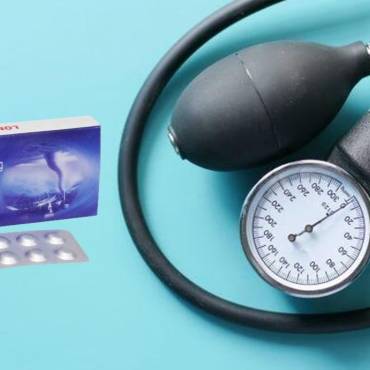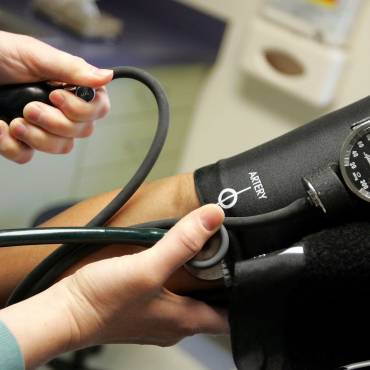Whether it is low or high blood pressure (BP), both conditions are dangerous and raise various health concerns. The way the number of high blood pressure cases is increasing shows how severely our haphazard lifestyle is posing a life-threatening risk. Gone are the days when only those who had crossed 40s and 50s used to be victims of heart and blood pressure diseases. These days, people from different age groups are found to have developed the symptoms of high blood pressure or hypertension and low heart rate. Therefore, home blood pressure monitoring becomes a crucial system that patients with high and low blood pressure should keep at home, and they should also learn how to measure blood pressure with heart rate correctly. You can use a home monitoring blood pressure device for accurate readings at a low cost.
Monitor blood pressure at home
Monitoring is an essential part of checking blood pressure for hypertension patients. Self-monitoring of heart and blood pressure gives patients a sense of empowerment in managing their heart health. There are many benefits of monitoring blood pressure at home. Many health experts recommend home monitoring for all people with a history of high blood pressure as it helps their doctor to know whether treatments are working or not. A home monitoring system is used to understand the condition of blood pressure whenever you feel uncomfortable or have any uncertainty about your pulse rate.
Monitoring blood pressure at home is widely recommended for:
-
- The patients diagnosed with high blood pressure or hypertension;
- Patients who want to change high BP medication or wish to adopt a new treatment plan and
- Those living with high blood pressure and/or who show symptoms of high heart rate and blood pressure.
Understand blood pressure readings
Generally, normal blood pressure remains less than 120/80 mmHg (millimeters of mercury). The higher number, also known as systolic, represents the pressure in your arteries when your heart beats, and the lower number, also known as diastolic, denotes the pressure when your heart rests between beats. The low blood pressure range remains below 90/60 mmHg, whereas the high blood pressure for the Stage 1 range is 130-139/80-89 mmHg, and the Stage 2 range is considered 140/90 mmHg or higher.

Is there a relationship between heart rate and blood pressure?
It is important to understand how home blood pressure monitoring devices work and benefit because even today, many individuals doubt about how can high blood pressure cause a heart attack.
Hypertension or high blood pressure raises the risk of heart attack, stroke, kidney disease, and heart failure. Moreover, high BP is a risk factor for severe cardiovascular (CV) disease. So, if you are searching if there is a relationship between heart rate and blood pressure, the answer is Yes: the higher the blood pressure you have, the higher the risk for heart disease you invite.
It is also true that there is little clinical evidence or trial data that supports the perfect relationship between high blood pressure and heart disease. Every incident of high blood pressure and low heart rate does not necessarily pose CV risk. Remember that home blood pressure monitoring is not a substitute for medicinal treatment. Therefore, medical consultation is very important to keep your blood pressure under check.
How to calculate blood pressure with heart rate at home
Home blood pressure monitoring (HBPM) refers to a self-monitoring tool recommended for patients living with hypertension or diagnosed with high blood pressure and low heart rate. There are some guidelines and rules for operating the HBPM devices to get accurate readings. HBPM is cheaper and easier to operate than office-based or hospital-based monitoring systems.
There are some guidelines for patients using home blood pressure monitoring, such as:
-
- Use a validated sphygmomanometer that consists of an inflatable cuff, a pressure gauge, and a stethoscope. Avoid finger or wrist blood pressure devices if possible.
- Avoid eating or taking medicines and physical workouts before a blood pressure reading.
- Avoid hard drinks, illicit materials, caffeine, or smoke for at least 30 minutes before wrapping the cuff on your arm.
- Comfortably sit and relax, and then place the cuff on bare skin.
- Check for the empty bladder first before using it.
- Try to measure your blood pressure at the same time every day.
- Each time you measure your blood pressure, take three measurements, 1 to 2 minutes apart.
- During the initial days, doctors recommend measuring blood pressure at least twice a day.
- Try to avoid BP measures right after you wake up in the morning.
Methods to control blood pressure conveniently
Following a doctor’s advice is the easiest and most accurate way to control blood pressure systematically and conveniently. The heart health of every individual varies depending on various factors; therefore, it is important to consult a doctor to understand the best treatment, medicine, and dosage for your heart health. Following a healthy lifestyle is also crucial to maintain overall health.



